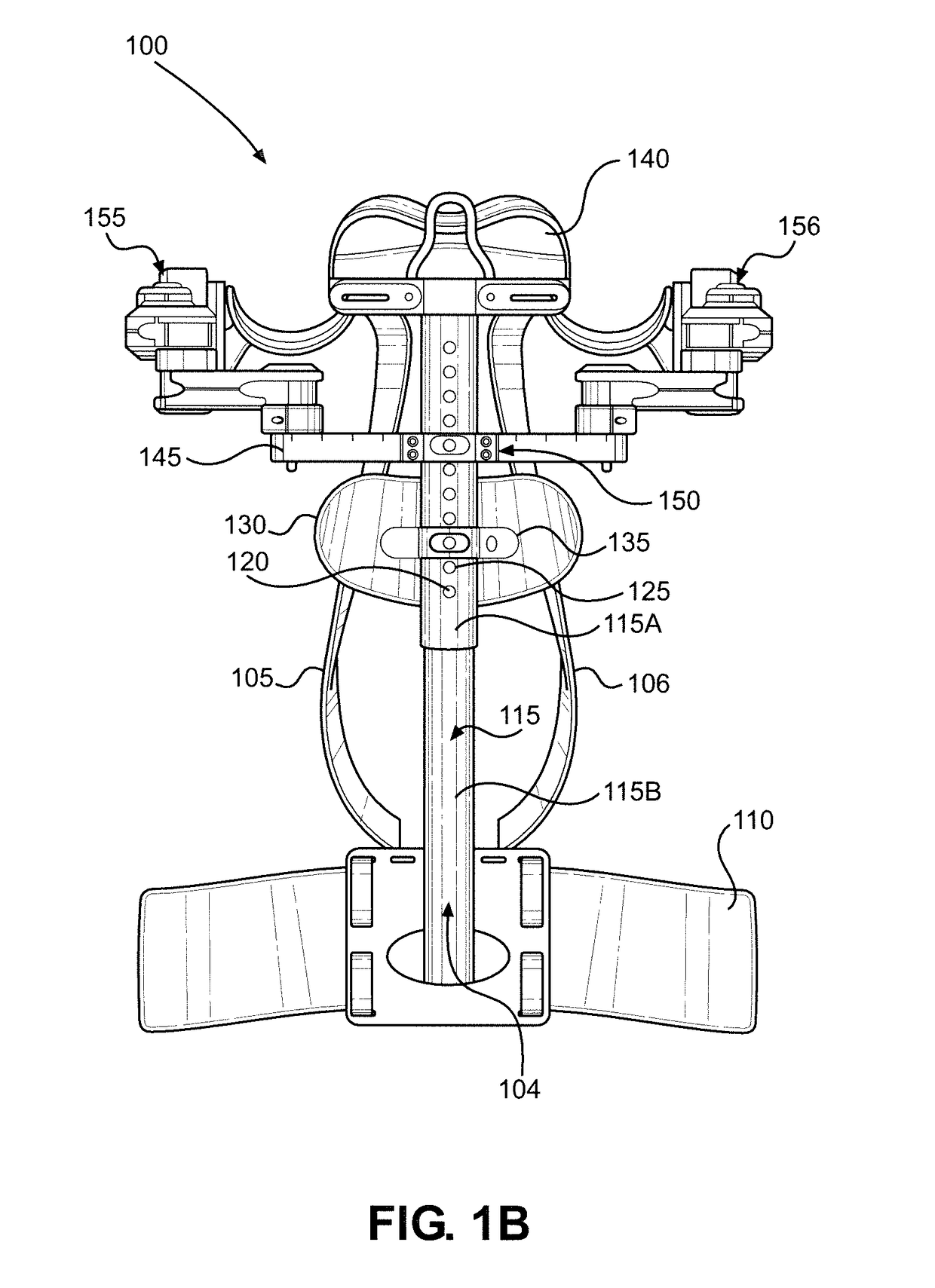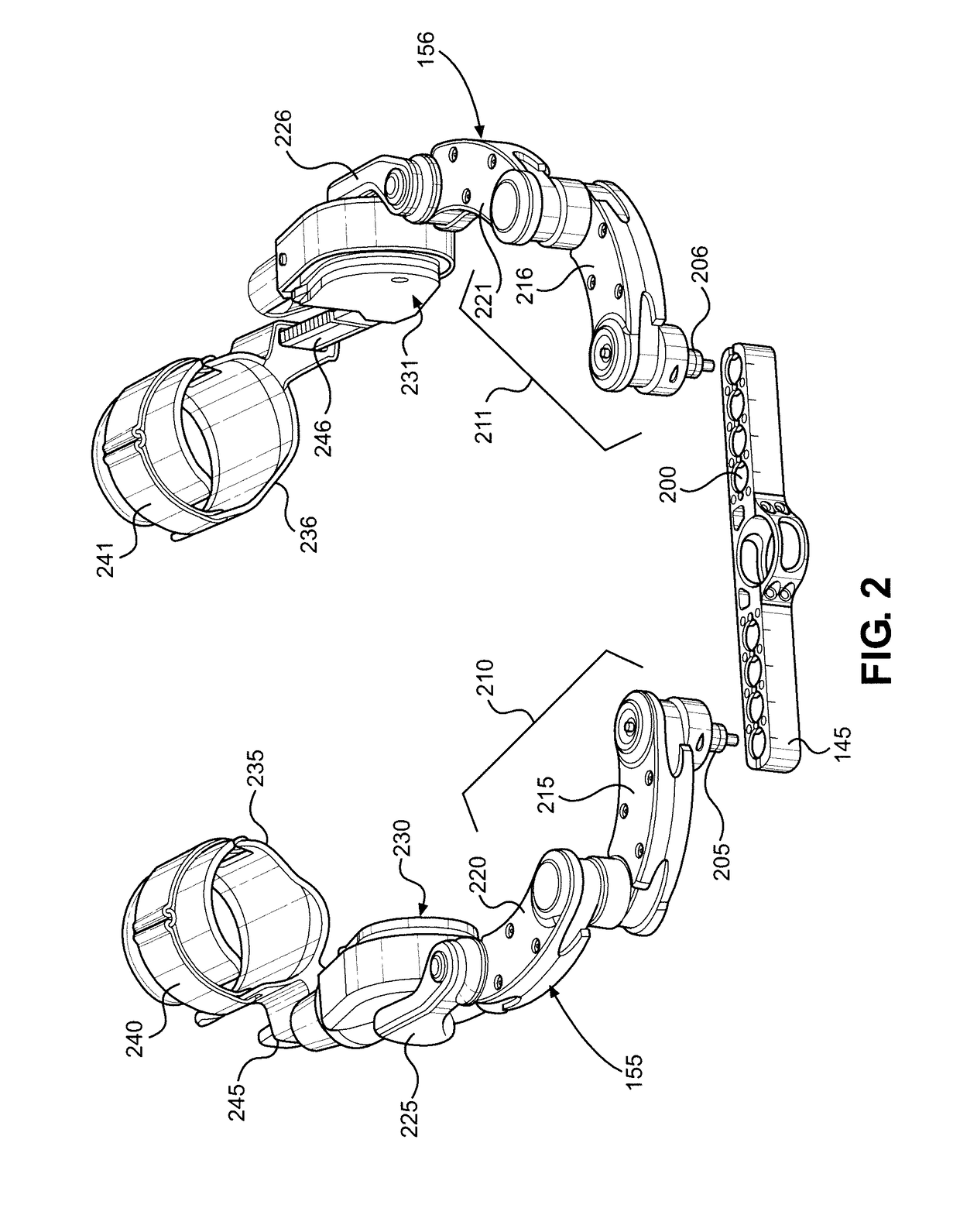Exoskeleton and Method of Providing an Assistive Torque to an Arm of a Wearer
a technology of assistive torque and exoskeleton, which is applied in the field of exoskeleton and method of providing assistive torque to the arm of a wearer, can solve the problems of high static load on the body, rapid fatigue, and static postures that add to the muscular effort required, and achieve better fit, better fit and/or more even force application.
- Summary
- Abstract
- Description
- Claims
- Application Information
AI Technical Summary
Benefits of technology
Problems solved by technology
Method used
Image
Examples
Embodiment Construction
[0048]Detailed embodiments of the present invention are disclosed herein. However, it is to be understood that the disclosed embodiments are merely exemplary of the invention that may be embodied in various and alternative forms. The figures are not necessarily to scale, and some features may be exaggerated or minimized to show details of particular components. Therefore, specific structural and functional details disclosed herein are not to be interpreted as limiting, but merely as a representative basis for teaching one skilled in the art to employ the present invention.
[0049]With initial reference to FIGS. 1A and 1B, there is shown an exoskeleton 100 in accordance with the present invention. FIG. 1A provides a front view of exoskeleton 100, while FIG. 1B provides a rear view. In the embodiment shown, exoskeleton 100 takes the form of a vest, which is wearable by a person and enables the wearer to perform work while his or her arms are fully supported by exoskeleton 100. Among oth...
PUM
 Login to View More
Login to View More Abstract
Description
Claims
Application Information
 Login to View More
Login to View More - R&D
- Intellectual Property
- Life Sciences
- Materials
- Tech Scout
- Unparalleled Data Quality
- Higher Quality Content
- 60% Fewer Hallucinations
Browse by: Latest US Patents, China's latest patents, Technical Efficacy Thesaurus, Application Domain, Technology Topic, Popular Technical Reports.
© 2025 PatSnap. All rights reserved.Legal|Privacy policy|Modern Slavery Act Transparency Statement|Sitemap|About US| Contact US: help@patsnap.com



